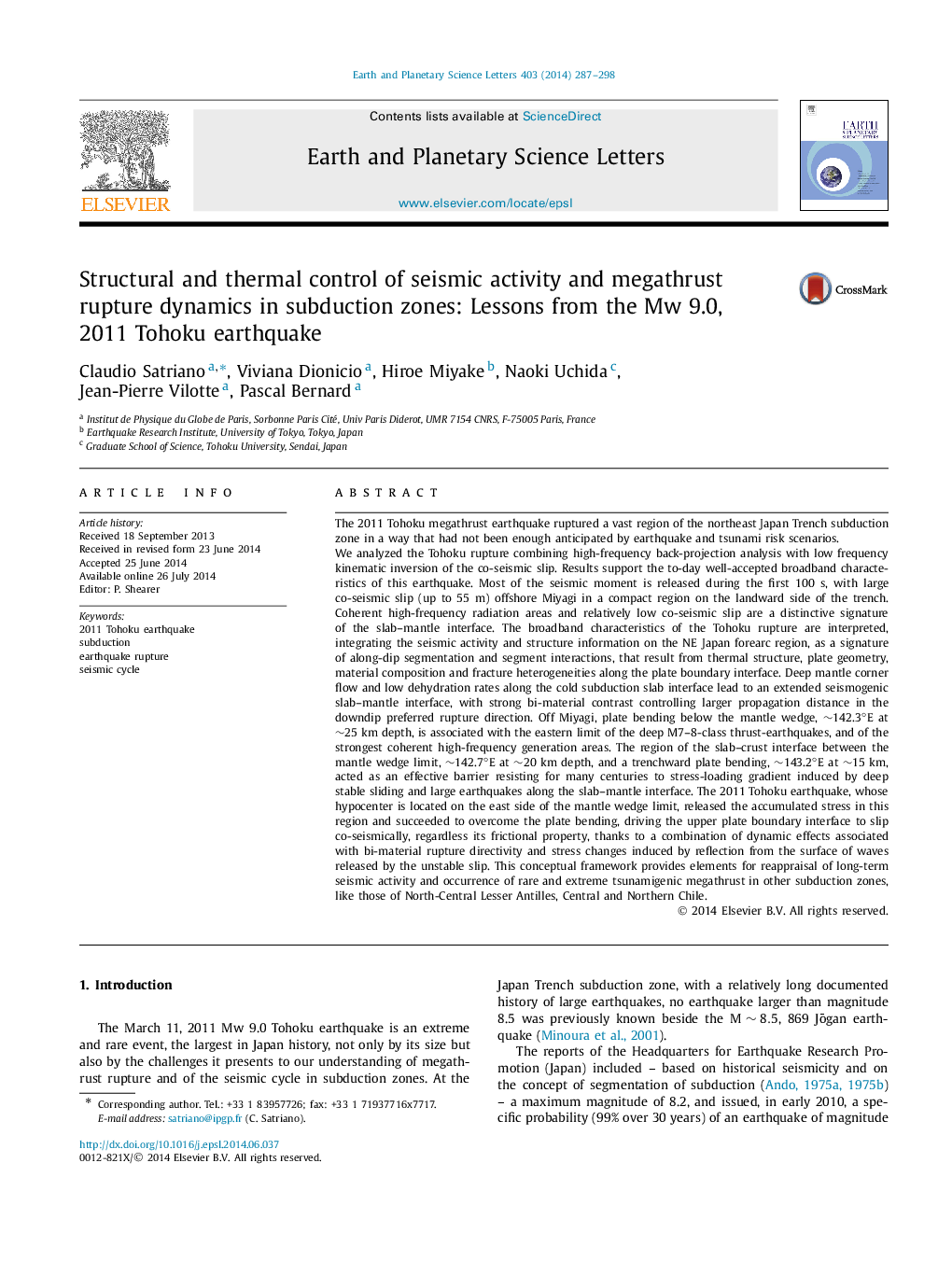| کد مقاله | کد نشریه | سال انتشار | مقاله انگلیسی | نسخه تمام متن |
|---|---|---|---|---|
| 6429132 | 1634753 | 2014 | 12 صفحه PDF | دانلود رایگان |

- Broadband megathrust characteristics and along-dip segment interactions.
- Dynamically driven large shallow co-seismic slip and tsunami sources.
- Seismic signature of subduction structure, slab dehydration and geometry.
- Variable recurrence of great and megathrust earthquakes in subduction zones.
- Stagnant mantle wedge and slab-mantle large thrust-earthquakes.
The 2011 Tohoku megathrust earthquake ruptured a vast region of the northeast Japan Trench subduction zone in a way that had not been enough anticipated by earthquake and tsunami risk scenarios.We analyzed the Tohoku rupture combining high-frequency back-projection analysis with low frequency kinematic inversion of the co-seismic slip. Results support the to-day well-accepted broadband characteristics of this earthquake. Most of the seismic moment is released during the first 100 s, with large co-seismic slip (up to 55 m) offshore Miyagi in a compact region on the landward side of the trench. Coherent high-frequency radiation areas and relatively low co-seismic slip are a distinctive signature of the slab-mantle interface. The broadband characteristics of the Tohoku rupture are interpreted, integrating the seismic activity and structure information on the NE Japan forearc region, as a signature of along-dip segmentation and segment interactions, that result from thermal structure, plate geometry, material composition and fracture heterogeneities along the plate boundary interface. Deep mantle corner flow and low dehydration rates along the cold subduction slab interface lead to an extended seismogenic slab-mantle interface, with strong bi-material contrast controlling larger propagation distance in the downdip preferred rupture direction. Off Miyagi, plate bending below the mantle wedge, â¼142.3°E at â¼25 km depth, is associated with the eastern limit of the deep M7-8-class thrust-earthquakes, and of the strongest coherent high-frequency generation areas. The region of the slab-crust interface between the mantle wedge limit, â¼142.7°E at â¼20 km depth, and a trenchward plate bending, â¼143.2°E at â¼15 km, acted as an effective barrier resisting for many centuries to stress-loading gradient induced by deep stable sliding and large earthquakes along the slab-mantle interface. The 2011 Tohoku earthquake, whose hypocenter is located on the east side of the mantle wedge limit, released the accumulated stress in this region and succeeded to overcome the plate bending, driving the upper plate boundary interface to slip co-seismically, regardless its frictional property, thanks to a combination of dynamic effects associated with bi-material rupture directivity and stress changes induced by reflection from the surface of waves released by the unstable slip. This conceptual framework provides elements for reappraisal of long-term seismic activity and occurrence of rare and extreme tsunamigenic megathrust in other subduction zones, like those of North-Central Lesser Antilles, Central and Northern Chile.
Journal: Earth and Planetary Science Letters - Volume 403, 1 October 2014, Pages 287-298